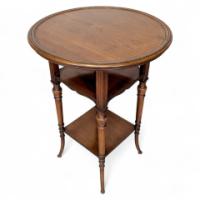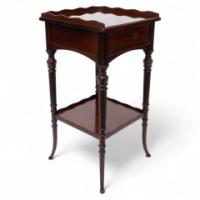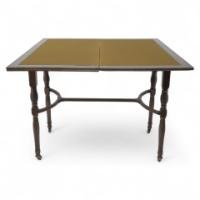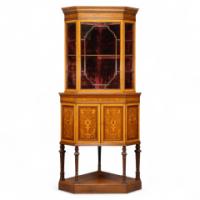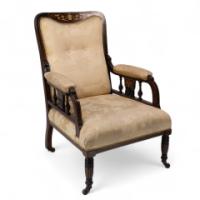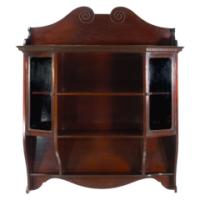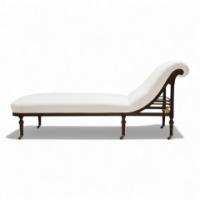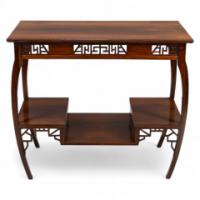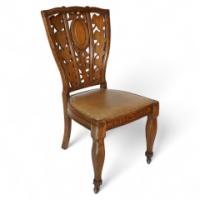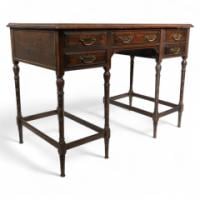Thomas Edward Collcutt, Collinson & Lock a Six-Piece Rosewood Drawing Room Suite
POA
Width: 20 in (50.8 cm)
Depth: 21 in (53.34 cm)
1880-1889
About this piece
Thomas Edward Collcutt (1840–1924) for Collinson & Lock of London
A museum-quality rosewood part drawing room suite of two nursing and four side chairs. Comprising: four side or dining chairs, a high-back nursing chair, and a low-back nursing chair. With ring-turned galleries, uprights, and supports, still retaining the original Paisley pattern silk brocade upholstery (some losses), identical to those illustrated in the 1871 Collinson & Lock catalogue (see last image). Also see Gere, Charlotte and Whiteway, Michael, Nineteenth-Century Design, London, 1993, p. 283.
Collcutt designed nearly all of the furniture in the Collinson & Lock catalogue of 1871. For Richard D'Oyly Carte, Thomas Collcutt was involved with designs for the Savoy Hotel and the Royal English Opera House in London, a lavish decorative interior with a grand marble and alabaster staircase, which opened in January 1891 with a lavish production of Arthur Sullivan's opera Ivanhoe.
Collcutt was elected President of the Royal Institute of British Architects in 1906. He received that society’s gold medal in 1902, and three years earlier was awarded the Grand Prix for architecture in connection with his artistic services at the Paris Exhibition.
Collinson & Lock
Collinson & Lock of London, "Art Furnishers", was founded with the partnership of F. G. Collinson and G. J. Lock, former employees of Jackson and Graham. Designers employed by the firm included T. E. Collcutt, the architect of their premises; E. W. Godwin, who was paid a retainer to produce exclusive designs for the company from 1872 to 1874; H. W. Batley; and Stephen Webb.
They made furniture for the new Law Courts to designs by G. E. Street, along with Gillows and Holland & Sons, and began decoration of the Savoy Theatre in 1881. Jackson and Graham was taken over in 1885, at the time when the firm had moved to Oxford Street and begun to focus on expensive commissions for grandiose London houses. The firm was taken over by Gillows in 1897.
The firm of Collinson & Lock was established in London in the third quarter of the 19th century and quickly achieved both commercial success and a leading position in the field of design. In 1871, the firm issued an impressive illustrated catalogue of Artistic Furniture, with plates drawn by J. Moyr Smith, shown in the last image here where the chairs are illustrated. Incidentally, John Moyr Smith designed for Mintons tile works and was assistant to Christopher Dresser.
By 1873, Collinson & Lock were trading from extensive newly built premises in St Bride Street. The firm continued to produce very high-quality items of furniture and soon began to experiment with new materials and designs, becoming especially renowned for their distinctive combinations of rosewood and ivory, and their intricate Italianate arabesques, traditional figures, and scrolling foliage.
(ON HOLD)

-medium-size.jpg)












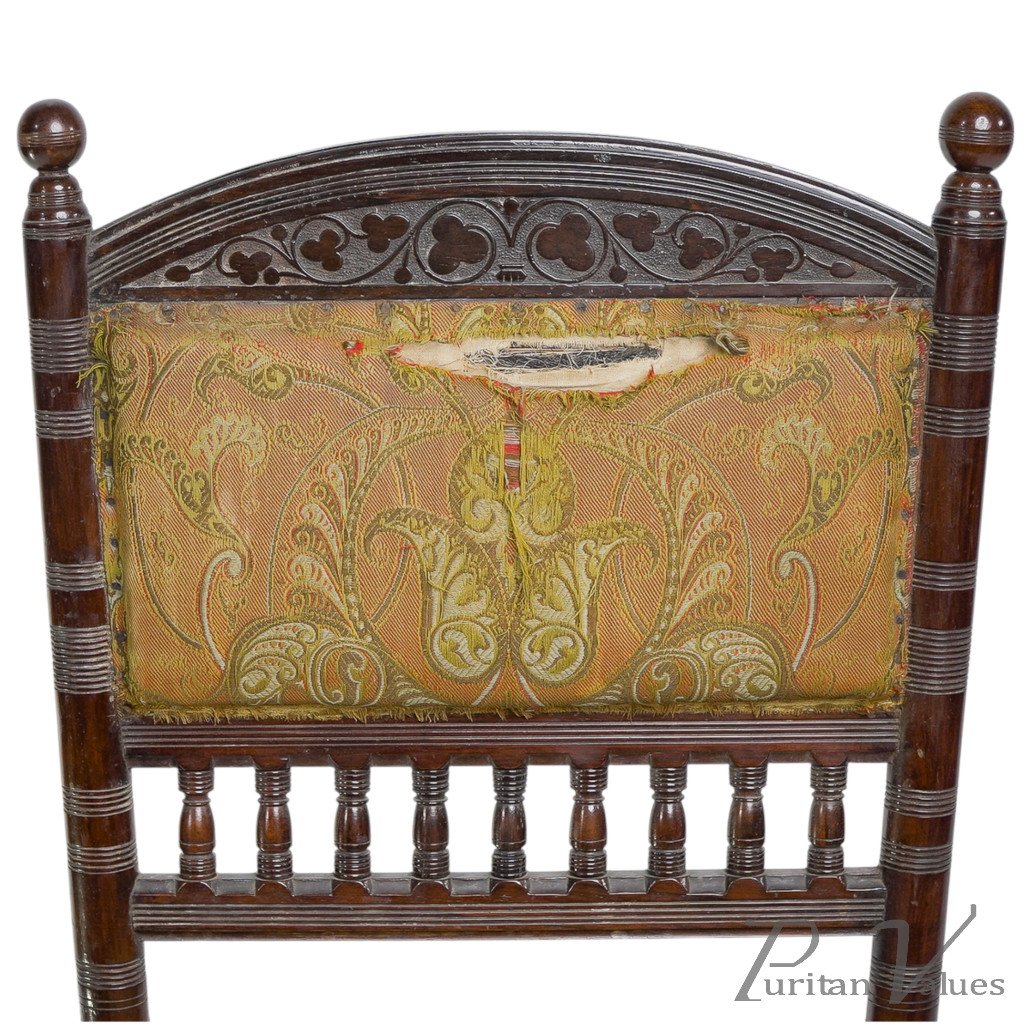






















-thumb.jpg)



































